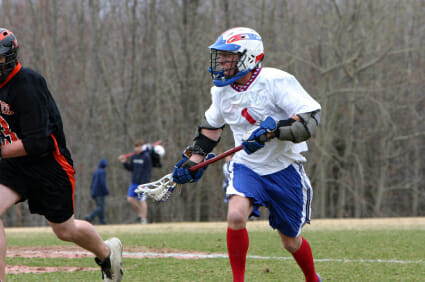When you think about concussions, the first sport that comes to your mind is probably football. There’s good reason for this, since football is responsible for the majority of concussions that occur in sports, but it’s important to keep in mind that it’s not the only sport in which concussions occur. The truth is, concussions can happen in just about any sport that involves contact, and high rates are also seen in lacrosse, ice hockey and wrestling. This means that even though football is still a few months away, it’s still important to be conscious of the dangers and signs of concussions right now, and always.
Concussions are a type of traumatic brain injury (TBI) that result from the brain moving rapidly and banging against the side of the skull. These sudden movements can damage brain tissue and trigger a series of harmful changes that may interfere with normal brain functioning. Of the more than 1 million TBIs that are reported every year, more than half occur in youth sports, which makes the need for prevention and treatment of these types of injuries even greater for younger athletes.
Surprisingly enough, approximately 33% of sports-related concussions occur at practice rather than during a game or match. This should be especially kept in mind for young athletes who participate in camps and clinics throughout the summer, as it shows there’s no “off-time” when concussions don’t happen. After an athlete does sustain a concussion, symptoms usually tend to go away after about a week, but this does not mean there won’t be any long-term complications.
Though it’s impossible to prevent all concussions, the best strategy is to take steps to reduce their likelihood and to clearly know their signs and symptoms. Below are some essential steps to help you stay smart about concussions all year round:
- Symptoms of a concussion may include difficulty concentrating, headache, fatigue, forgetfulness, dizziness and/or trouble sleeping; in some cases these symptoms can take hours or days to appear, so keep a watchful eye for them
- After any serious blow to the head, athletes should be evaluated for symptoms; if a concussion is confirmed, they should be taken out of gameplay and evaluated by a medical professional, as it’s very dangerous to return to play within the first 10 days after a concussion
- The best treatment for a concussion is simply rest and time; young athletes should not return to sports until they’re cleared by their doctor
- Parents and coaches should make it a focus to ensure young athletes are obeying the rules, wearing proper equipment, playing safely and not pushing through any possible head injuries to lower concussion risk
- Exercises that strengthen neck muscles, teaching appropriate techniques like how to properly tackle in football and warning team members about aggressive play are also ways to reduce the likelihood of a concussion
- Be aware of post-concussion syndrome, which is when symptoms like dizziness and headache last longer than two weeks; for young athletes with these lingering symptoms, it’s best to see a physical therapist that specializes in vestibular rehabilitation
Much is being done to increase awareness of concussions and reduce the risk, but there’s still a ways to go. The best thing you can do is to play your part and make sure others around you are doing the same to keep your children’s heads safe during athletic play. For more information on concussions or for any other aches or pains you may be having, Dynamic Sports physical therapists in New York City can help. Call us at 212-317-8303 for more information or to schedule an appointment.

